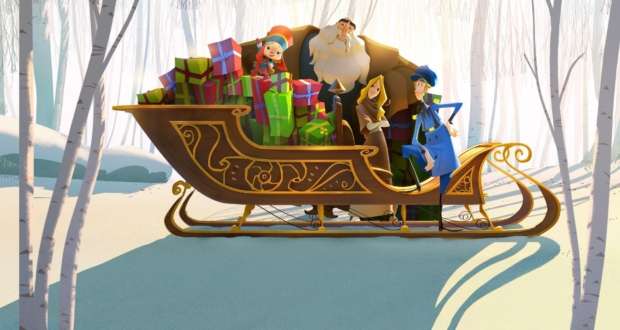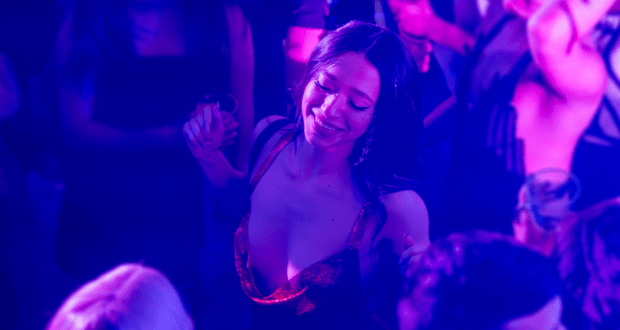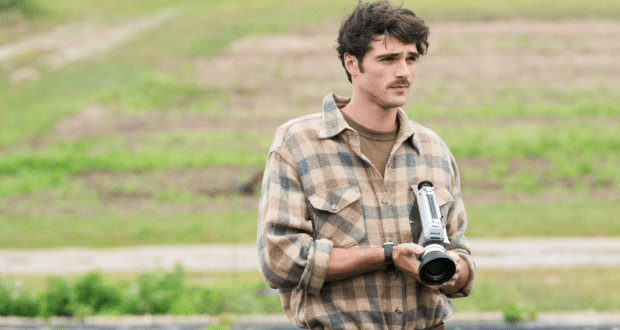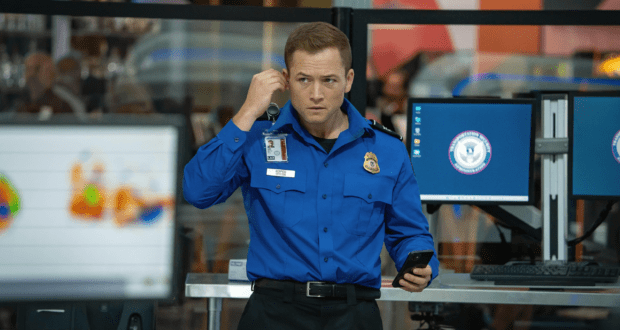Synopsis: A family in 1630s New England is torn apart by the forces of witchcraft, black magic and possession.
Robert Egger’s debut feature, The Witch, places us in the 1600s, in New England, with a family so devoted to their religion, it causes them to be kicked out of their small settlement town, and sends them to live as god-fearing outcasts on a remote farm in the middle of some godforsaken woods. William (Ralph Ineson) is a farmer, Katherine (Kate Dickie) is his screeching wife, Thomasin (Anya Taylor-Joy) is their eldest daughter, Caleb (Harvey Scrimshaw) their cute pre-teen son, and there are two chubby twins in tow. One other child, a small baby, is around for a tad, until he’s kidnapped under Thomasin’s watch. This is why Katherine screeches, because Thomasin lost the baby to the clutches of a flesh-starved witch. Aside from emotional stress, William’s poor hunting and gathering skills have left them in danger of starving.
The horror in Egger’s horror movie is the threat of it. The film is bookended by some effectively terrifying and morbid imagery, but what’s lumped in the middle is half-baked, flavorless goo. Though influenced by art house and horror alike, it’s a haphazard attempt to have it both ways. What’s worse is it’s a boring flick to boot. Does a gonzo climax make up for the many shortcomings? No. But it’s still pretty nuts.
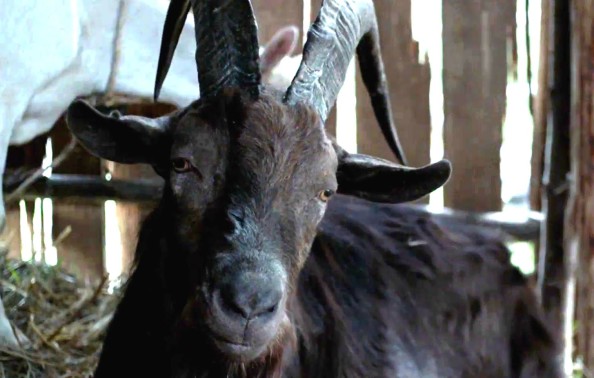
The Good
When we see the witch, it’s in the darkness of her lair, in flickering jump cuts, bathed in a soft darkness. Think Goya’s “Saturn Devours His Son.” Funnily this scene actually involves the devouring of a child. While we don’t see the witch again for the duration of the film, those early images are meant to hang over the rest of the movie, to frame the mood, to forge a bridge to the last act. The last twenty minutes is a spooky, blood soaked finale, an ending that not only feels perfectly insane, but also delivers the devil to us in a satisfying way. In other words, it goes for it, and its particularly exciting given the lackluster junk preceding it. While my disappointments with The Witch align ideologically with my gripes over last year’s It Follows, the successes of The Witch bring the brilliantly prickly Antichrist to mind, Von Trier’s awesome art house horror flick.
But the ferocious shock value and smug facetiousness of Von Trier’s Antichrist worked so well because the entire film was an intense gross out thriller, and it was genuinely entertaining. The Witch is a phoned-in, uninteresting drama. But I digress, as I’m still in the “Good” section, and need to check myself. The point is that the influence of Antichrist may be seen in the aesthetics, but there is family drama in them there hills, and it brought me back to an old goody. William Wellman’s 1954 film, Track of the Cat, starring an egomaniacal Robert Mitchum as the patriarchal son of a family of downtrodden, loony characters, is structurally more closely related to The Witch. The threat of the witch hangs over The Witch as a deadly black panther does in Track of the Cat, and in both films the family at the center of the plot is driven into hysteria partly, perhaps, because of these imminent but unseen threats. It’s actually not surprising that Egger’s is able to evoke both Lars Von Trier and William Wellman—it is evidence of how much Eggers allowed The Witch to be influenced by other more nuanced styles. And can I just stop and admire the handsomeness of Black Phillip, the CGI-born black goat. Black Phillip is perhaps the biggest success of The Witch. He’s spooky, he’s nimble, and I was dying to pet his soulless furry body. It’s so darned cute to think of the Devil keeping a pet goat.
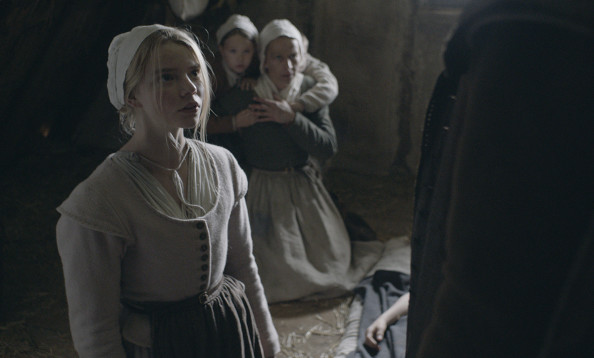
The Bad
Comparing The Witch to Antichrist is a byproduct of Black Phillip’s speaking parts (of which there were too few). Talking animals was a really weird trend in Antichrist. Animals spoke, and gave birth, and Willem Defoe just stood there and took it. But the reason it added so much to the surrealist aesthetic in Antichrist, along with the other surreal images (like a very handsy tree), is that the plot-driven portions were actually just as insane, but still adhered to the idea of telling a compelling story. Von Trier earned the right to be trippy, because he didn’t simply imply madness. He infused it into every detail of his film with unabashed enthusiasm. The Witch cops out to our perceived sensibilities, feigning artfulness to avoid letting the freak flag fly. While the blips of the witch we’re allowed to see send us into the belly of hell, any effort to sustain the crazy is popped like a pinpricked balloon. What is left deflated is the lifeless plot.
The family drama on display is mucked the muck up. William’s inability to provide for his family (the corn crops are all but dead, and he’s no Dick Cheney with a rifle) and Katherine’s inability to cope with the loss of her baby (not helped when Caleb falls ill and may be in need of an exorcism) leaves this family in a state of civil war.
I could continue to breakdown The Witch in regard to Track of the Cat as well, but exposing the differences in the plot mechanics, script strength, and performances of one of Jonathon Rosenbaum’s favorite movies is an exhausting thought. Besides, The Witch is bad enough on its own terms.
Thomasin’s clashes with her mother are driven by Crawfordian bitterness. But this ain’t no Mommie Dearest. And the writing is the culprit. No movie could survive the amount of “doth’s,” thee’s,” and “thou’s” plopping out of the mouths of these hapless characters. It said somewhere that the script accurately represented the talk from those days. But it isn’t the words I care about. It’s what’s being said. Long, boring conversations about dying crops and acute loneliness and homesickness carry the same effect on the audience as forcing them to snort Advil PM. If you pop awake long enough for one exchange of dialogue, you’ll get the gist of it. If you go to the bathroom, grab a snack, and pop in for twenty minutes of another movie, and then return to catch another line of dialogue, you’ll still get the gist of it.
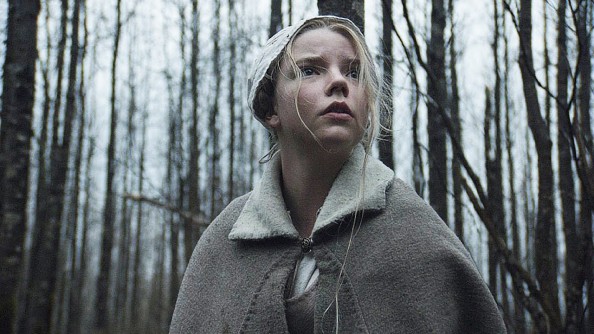
The lack of complexity is matched by a lack of scenery. A grayish blue filter sucks the life out of the frame. Cinematographer Jarin Blaschke is focused on bringing the sticks back to prominence. He certainly is content to poodle around the woods with the spookiness assumed. But I felt as spooked as when I watched Disney’s live-action form of water torture, Into the Woods. The score, especially in the opening sequences, was nails-on-a-chalkboard bad. For a split second, I thought my head would explode, but even that didn’t scare me.
Ralph Ineson’s accent was so thick you couldn’t drink it through a straw. It was almost like he was giving his lines while under water. I suppose it’s better than the wrath of Kate Dickie. She was a screaming teakettle in a home for the deaf. Though neither of them could act anything but annoying, their voices combined to form a harmony unique in its ability to distract me from the wretched dialogue. SPOILER ALERT: Anya Taylor-Joy looked alive only when she was killing the entire family. Though, to be honest, I’d give her an Oscar on the spot for how genuinely relieved both she and I were after those bastards got the ax. SPOILER ALERT: OVER. BAD MOVIE ALERT: CONTINUES: There’s a scene where an evil looking crow pecks Katherine’s chest to a bloody mess, and all I could think was how my tolerance for this movie was about as ravaged as her bloody boob.
The Verdict
If you are a horror fan, you will see The Witch because you’ve already seen The Boy, and the latest installment of The Purge, as well as the sequel to The Conjuring, have not come out yet. If you were a fan of the similarly disappointing and dreadful art house horror darling from last year, It Follows, then perhaps this jaunt through the woods is for you. If you simply want to hit the cinema, be a part of the conversation and see this movie. The ending is nearly the magic elixir to make this movie a qualified success, and considering the dearth of good films released in the past couple of months, a good ending means a good movie to see. Mind you, there is a difference between a “good movie,” and a “good movie to see,” but beggars can’t be choosers. Whether or not you are a beggar is your choice to make.
-
Acting - 3/10
3/10
-
Cinematography - 3/10
3/10
-
Plot/Screenplay - 2/10
2/10
-
Setting/Theme - 8/10
8/10
-
Buyability - 5/10
5/10
-
Recyclability - 1/10
1/10


